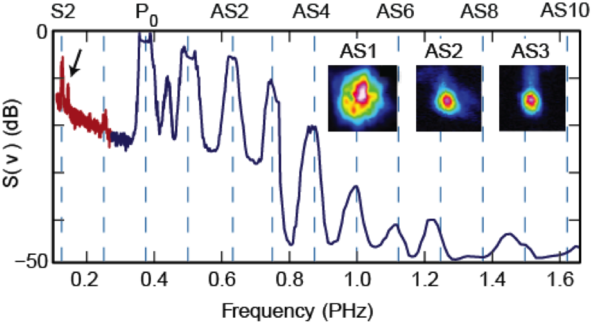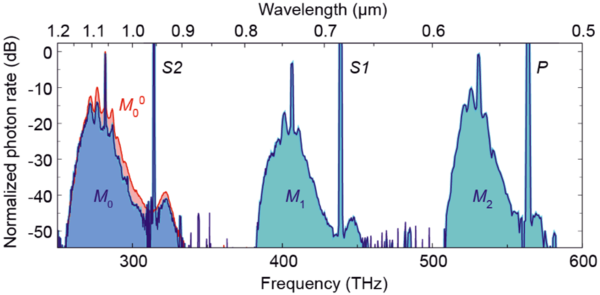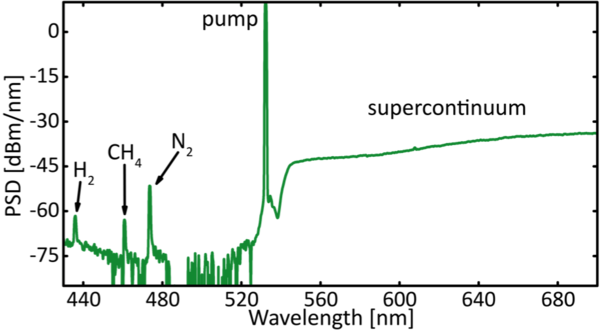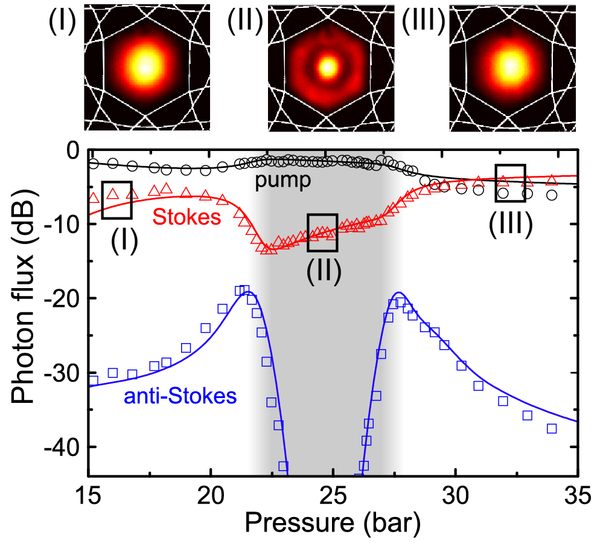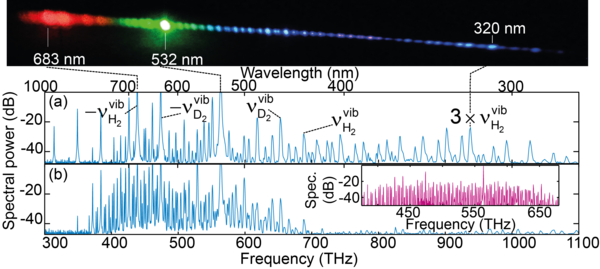Stimulated Raman scattering
Hollow-core photonic crystal fibre (HC-PCF) filled with molecular gases is an ideal vehicle for studying gas-phase stimulated Raman scattering (SRS) [Benabid (2002)]. In contrast to free-space arrangements, they offer long collinear path lengths, tight confinement of light and gas within the hollow core and pressure-adjustable dispersion. The Division's activities in this area have mainly focused on efficient generation of Raman sidebands via SRS, in particular through the controllable molecular modulation induced by the travelling coherence waves excited in the medium. There is also a link to soliton self-compression, which can result in impulsive excitation of Raman coherence if the pulse duration becomes shorter than half a cycle of the Raman oscillation.

